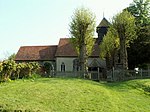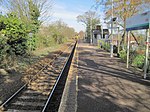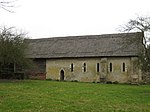Lamarsh

Lamarsh is a village and a civil parish in the Braintree District, in the county of Essex, England. It is near the large village of Bures and the village of Alphamstone. The village is west of the River Stour. It has a pub, a village hall and a church called The Friends of Holy Innocents Church. The civil parish's name, Lamarsh, comes from the phrase "Loamy marsh". This is derived from the Old English terms lām and mersc, which translate into loam or clay and a marsh respectively. In the 1870s, Lamarsh was described as: "LAMARSH, a parish, with a village, in the district of Sudbury and county of Essex; adjacent to the river Stour at the boundary with Suffolk, 2½ miles NW of Bures r. station, and 4 SSE of Sudbury."
Excerpt from the Wikipedia article Lamarsh (License: CC BY-SA 3.0, Authors, Images).Lamarsh
Alphamstone Road, Essex
Geographical coordinates (GPS) Address Nearby Places Show on map
Geographical coordinates (GPS)
| Latitude | Longitude |
|---|---|
| N 51.9873 ° | E 0.7522 ° |
Address
Alphamstone Road
Alphamstone Road
CO8 5ES Essex
England, United Kingdom
Open on Google Maps








